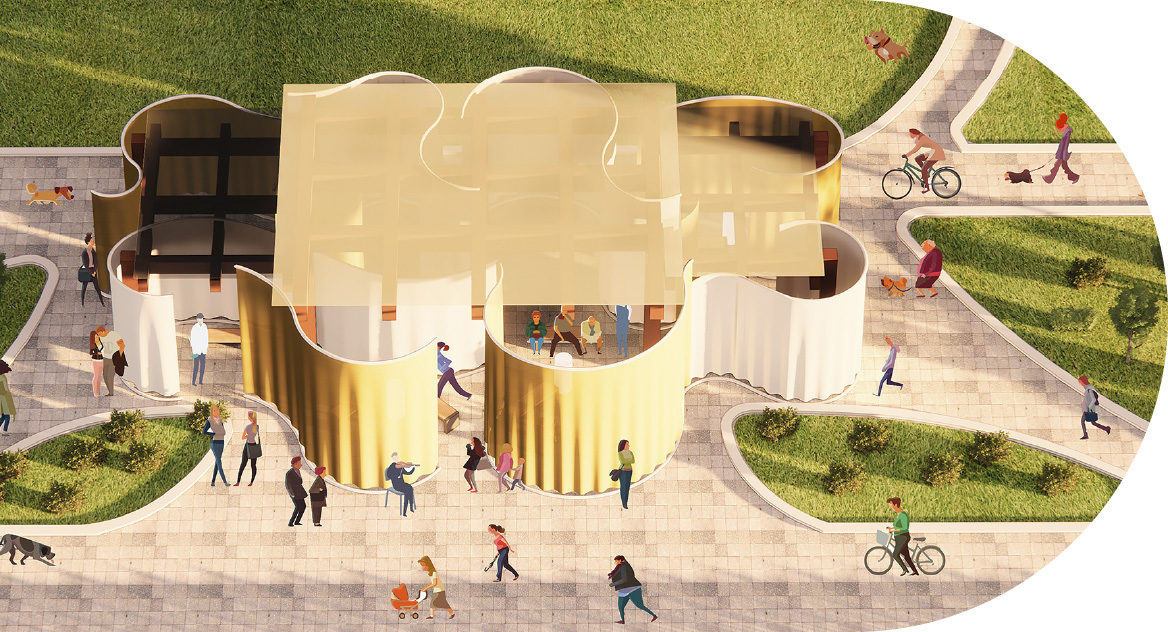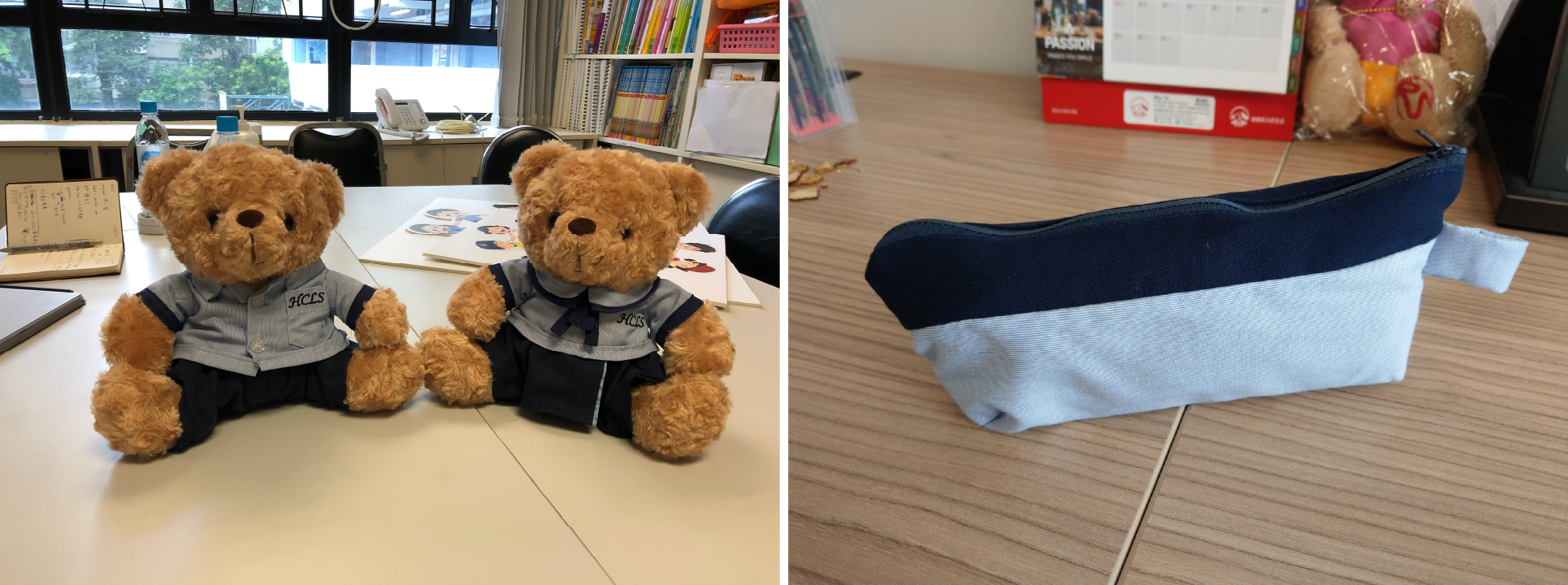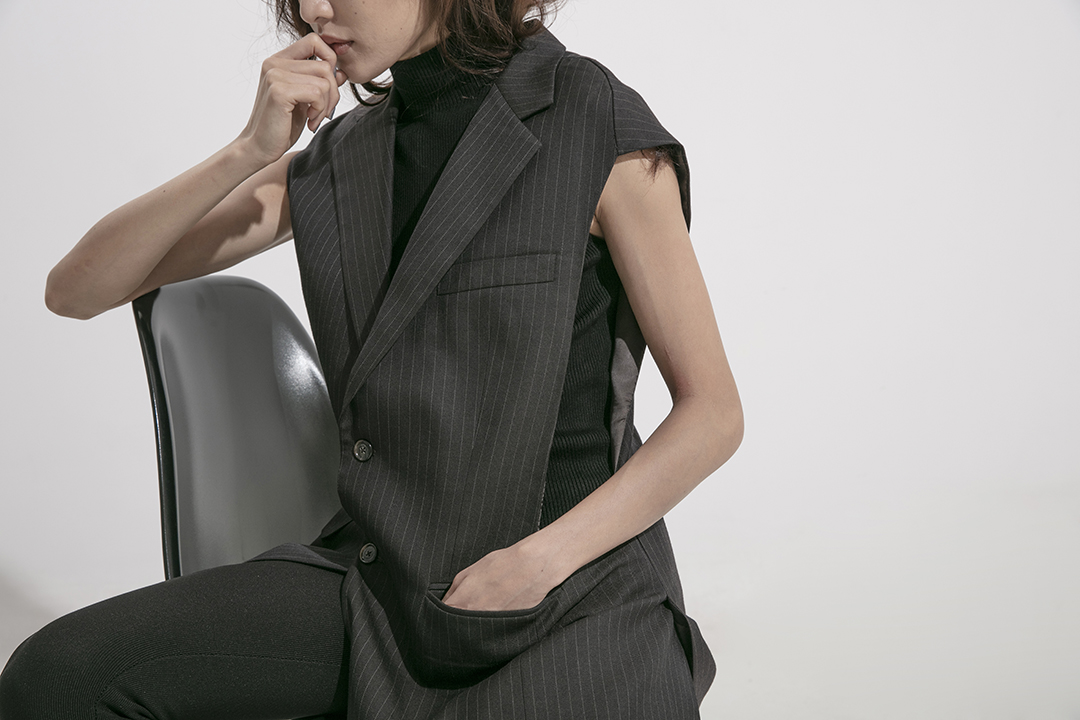Design for Good

The new generation of Hong Kong designers in our Design Incubation Programme (DIP) and Fashion Incubation Programme (FIP) is united by an appreciation of identity, sustainability, and collaboration. From their design philosophies to projects, they epitomise how when it comes to ‘good design’, improving lives and feeling good about it are always worthy pursuits.
Dress Green: Creating new life from old school uniforms
 Dress Green’s iconic school souvenirs made of old uniform and recycled materials: toy bears (left) and pencil case (right)
Dress Green’s iconic school souvenirs made of old uniform and recycled materials: toy bears (left) and pencil case (right)
When designing, Emma Yu and Victor Pang from Dress Green adopt a human-centered approach: “We think about what problems our users are facing and how our designs can help solve those problems.” The studio combines sustainability, art, and education to inspire creativity and awareness around sustainability issues, adding “Most people think that good design is only about aesthetics, and if it looks good, it must be good design. Aesthetics are just one of the elements of good design. How designs improve people’s lives is more important. ” Their ‘UNI Green’ project is an example of this in action: a platform that reuses, recycles, and upcycles second-hand uniforms, turning them into new products and passing knowledge of environmental protection to the next generation.
Aesthetics are just one of the elements of good design. How designs improve people’s lives is more important.
Orient Occident Atelier: Building solutions to important issues
 OOA released a series of architectural VR simulation, animated videos, and panoramas of Bishop Hill’s reservoir to raise public awareness on heritage preservation.
OOA released a series of architectural VR simulation, animated videos, and panoramas of Bishop Hill’s reservoir to raise public awareness on heritage preservation.
Designers Kenrick Wong and Magic Kwan of OOA believe good design should “pursue feelings of ease, equilibrium, and enlivenment.” By collaborating with government bodies and social enterprises to design and build solutions to environmental and social problems, the duo employs human-centricity. “Good design should be based on the perspectives of the user, taking their culture, characteristics, and habits as an entry point,” they state. Earlier this year, ahead of their upcoming Bishop Hill Underground Service Reservoir Project, the team released a series of VR simulations, animated videos, and panoramas of the excavated underground space to help raise public awareness around preserving Hong Kong’s heritage and examining our sense of ethnic, cultural, and historical identity. The project will officially launch in November as part of BODW CityProg 2021.
Good design should be based on the perspectives of the user, taking their culture, characteristics, and habits as an entry point.
Land + Civilization Compositions: Curating spaces for people to come together
 Land + Civilization Compositions’ two shortlisted projects for Via North Point: “Glow Together” (left) and “Neighborhood Playhouse” (right)
Land + Civilization Compositions’ two shortlisted projects for Via North Point: “Glow Together” (left) and “Neighborhood Playhouse” (right)
Neighbourliness is key to the work of Land + Civilization Compositions, who have recently had two projects shortlisted in the Open Call for Creative Community Space Proposals for Via North Point. From turning Kam Ping Street into a community hub with movable street furniture, outdoor lighting, and edible plants in “Glow Together”, to collecting and curating verbally narrated history and memories of North Point in “Neighbourhood Playhouse”, the Hong Kong-Shenzhen-Rotterdam-based team believes good design can be the key to cultivating sustainable neighbourhoods: “‘In the end, our designs are about providing spaces for people to come together.”
In the end, our designs are about providing spaces for people to come together.
Tomorrow by Daydream Nation: Championing sustainable fashion
 Fashion Clinic’s latest project with the London laundry brand Jeeves
Fashion Clinic’s latest project with the London laundry brand Jeeves
The balance of nostalgia and newness is also central to the work of Kay Wong, founder of Tomorrow by Daydream Nation, who states that “Improving lives is the very essence of design.” Her passionate commitment to closing the loop in the consumption cycle by redesigning and upcycling deadstock garments led to the creation of the Fashion Clinic, a collective of specialists on a revolution to resuscitate style for individuals and corporates without adding to the landfills. “A lot of people, and even designers, often forget that we should really design where there is a need, rather than only creating something we think is beautiful. The balance between form and function is often neglected.”
A lot of people, and even designers, often forget that we should really design where there is a need, rather than only creating something we think is beautiful.
While trends may come and go, it’s inspiring to see Hong Kong’s young designers collaborating with and engaging the public and fostering positive trends through design. Whatever their creations may be – from upcycled products and fashion to raising social and cultural awareness and curating communal spaces, these designers can truly make a difference.